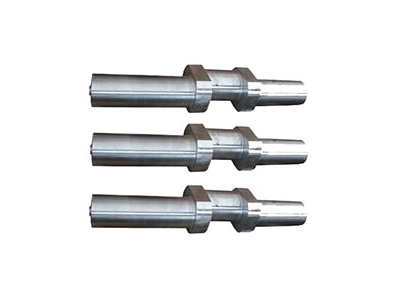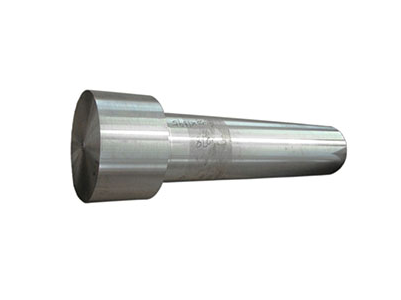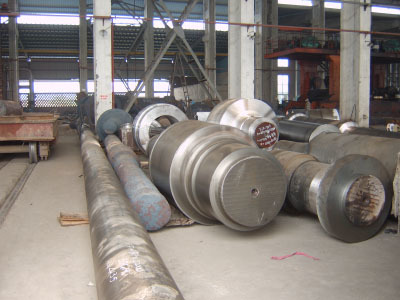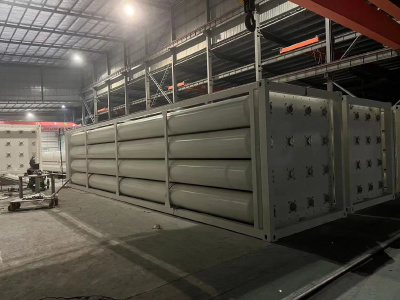Understanding the Benefits of Large Diameter Ring Forging in Metal Processing
Release Time:
Jul 11,2025
Understanding the Benefits of Large Diameter Ring Forging in Metal Processing Table of Contents Introduction to Large Diameter Ring Forging What is Large Diameter Ring Forging? The Process of Large Diameter Ring Forging Advantages of Large Diameter Ring Forging Improved Mechanical Properties Cost-Effectiveness Design Flexibility

Understanding the Benefits of Large Diameter Ring Forging in Metal Processing
Table of Contents
- Introduction to Large Diameter Ring Forging
- What is Large Diameter Ring Forging?
- The Process of Large Diameter Ring Forging
- Advantages of Large Diameter Ring Forging
- Applications of Large Diameter Ring Forging
- Challenges and Solutions in Large Diameter Ring Forging
- Future Trends in Ring Forging
- FAQs
- Conclusion
Introduction to Large Diameter Ring Forging
Large diameter ring forging is an advanced manufacturing process that plays a critical role in metal processing. It involves shaping metal into large rings suitable for various applications. This technique is not only efficient but also enhances the performance and durability of the forged components. In this article, we will explore the numerous benefits of large diameter ring forging, the processes involved, and its applications across different industries.
What is Large Diameter Ring Forging?
Large diameter ring forging refers to the technique of forming metal into large circular shapes by applying compressive forces. This process typically involves heating the metal to a malleable state and then shaping it using a hammer or press. The result is a ring that possesses exceptional strength and structural integrity. This method is particularly useful for producing items such as flanges, gears, and other critical components used in various manufacturing sectors.
The Process of Large Diameter Ring Forging
The process of large diameter ring forging can be broken down into several key steps:
1. Material Selection
Choosing the right material is crucial. Common materials used include carbon steel, alloy steel, and stainless steel, each selected based on the final application requirements.
2. Heating the Metal
Prior to forging, the metal is heated to a specific temperature to enhance its malleability. This heating can be achieved through induction heating, gas-fired furnaces, or other methods.
3. Forging the Ring
Once the metal reaches the desired temperature, it is subjected to forging operations. This can be done using open-die or closed-die forging techniques, depending on the complexity and specifications of the design.
4. Cooling and Finishing
After forging, the ring is cooled down, often in a controlled environment to ensure the desired mechanical properties. Subsequent finishing processes may include machining, heat treatment, and surface finishing to meet specific tolerances and surface quality standards.
Advantages of Large Diameter Ring Forging
The benefits of large diameter ring forging are numerous and impactful for manufacturers and end-users alike.
Improved Mechanical Properties
Forged rings exhibit superior mechanical properties compared to cast or fabricated components. The process aligns the grain structure of the metal, resulting in enhanced strength, toughness, and fatigue resistance. This makes forged components more reliable in demanding applications.
Cost-Effectiveness
While the initial setup for large diameter ring forging may be higher than other manufacturing methods, the long-term benefits can lead to significant cost savings. The durability and reduced failure rates of forged components minimize the need for replacements and repairs, ultimately lowering lifecycle costs.
Design Flexibility
Large diameter ring forging allows for intricate designs that can accommodate specific application needs. The ability to create complex shapes means that manufacturers can innovate and tailor components for specialized use, improving functionality and performance.
Applications of Large Diameter Ring Forging
Large diameter ring forging finds application in several key industries:
Use in Aerospace Industry
In the aerospace sector, large diameter forged rings are essential for components such as turbine disks and casings. The high-performance requirements of aerospace applications demand materials that can withstand extreme conditions, making forged components an ideal choice.
Use in Energy Sector
The energy sector, including oil and gas, benefits significantly from large diameter ring forging. Components like valve bodies and flanges used in critical systems are often forged to ensure reliability under high pressure and temperature conditions.
Challenges and Solutions in Large Diameter Ring Forging
Despite its advantages, large diameter ring forging presents challenges such as high initial costs, equipment requirements, and material wastage.
1. Equipment Investment
The machinery required for large diameter ring forging can be costly. However, investing in advanced technology can enhance efficiency and reduce operational costs in the long run.
2. Material Utilization
Efficient material utilization is crucial to minimize waste. Utilizing computer-aided design (CAD) and simulation software can optimize designs for better material usage.
Future Trends in Ring Forging
As technology advances, several trends are shaping the future of large diameter ring forging. Automation and smart manufacturing are expected to play significant roles, enhancing production efficiency and precision. Additionally, the integration of advanced materials and techniques, such as additive manufacturing, may further revolutionize the forging process.
FAQs
1. What materials are commonly used in large diameter ring forging?
Common materials include carbon steel, alloy steel, stainless steel, and special alloys tailored for specific applications.
2. How does large diameter ring forging compare to casting?
Forging typically results in stronger, more durable components due to the aligned grain structure, while casting can lead to defects and weaker properties.
3. What industries primarily utilize large diameter ring forging?
Industries such as aerospace, energy, automotive, and manufacturing frequently employ this forging technique due to the high-performance requirements of their components.
4. Can complex shapes be forged using this method?
Yes, large diameter ring forging allows for the creation of complex shapes and designs, providing flexibility in meeting specific application needs.
5. What are the environmental impacts of large diameter ring forging?
While forging does have an environmental impact, advancements in technology are continually improving energy efficiency and reducing waste, making it a more sustainable option over time.
Conclusion
Large diameter ring forging stands out as a vital process in metal processing, offering numerous benefits that enhance component performance, design flexibility, and cost-effectiveness. As industries continue to evolve, the adoption of this advanced manufacturing technique will likely expand, providing solutions that meet the high demands of modern applications. Understanding the intricacies and advantages of large diameter ring forging equips manufacturers with the knowledge to optimize their production processes and enhance the quality of their metal components.
多行文本内容元素
富文本内容绑定数据后可解析HTML语言内容
Key words:
News Hotspot








